Learn about the best lemongrass companion plants to help this useful, fragrant, tender perennial thrive. Get a list of the best companion plants you can surround your lemongrass with if you are planting it in the ground, including the best flowers to grow as companion plants for lemongrass, the best fruit to plant around lemongrass, the best herbs to plant with lemongrass, and the best vegetables to plant with lemongrass.
If you live in an area where lemongrass does not winter over outside, like where I live in USDA Garden Zone 8, get ideas about which plants to grow in a container with lemongrass. You will also get ideas about which plants to avoid planting near lemongrass plants as well. Learn about the best time to plant lemongrass, the best place to plant lemongrass, how to support lemongrass as it grows, the best fertilizer for lemongrass, the watering needs of lemongrass, and the best way to propagate lemongrass to increase the number of your lemongrass plants. You will also find a handy quick reference chart that lists all of the lemongrass companion plants in one place. Let‘s get started!
Table of Contents
Why I Love Lemongrass
I was visiting some family members in California recently, and a neighbor brought over a clump of lemongrass he had just divided from a plant in his yard. My grandson and I found a nice spot in their USDA Plant Hardiness Zone 10a backyard, planted it, and watered it in. The grassy stalks made a nice contrast to the leaves on the grapevines that were growing nearby. In fact, lemongrass makes a very attractive backdrop for many shorter plants, including annual flowers and vegetables.
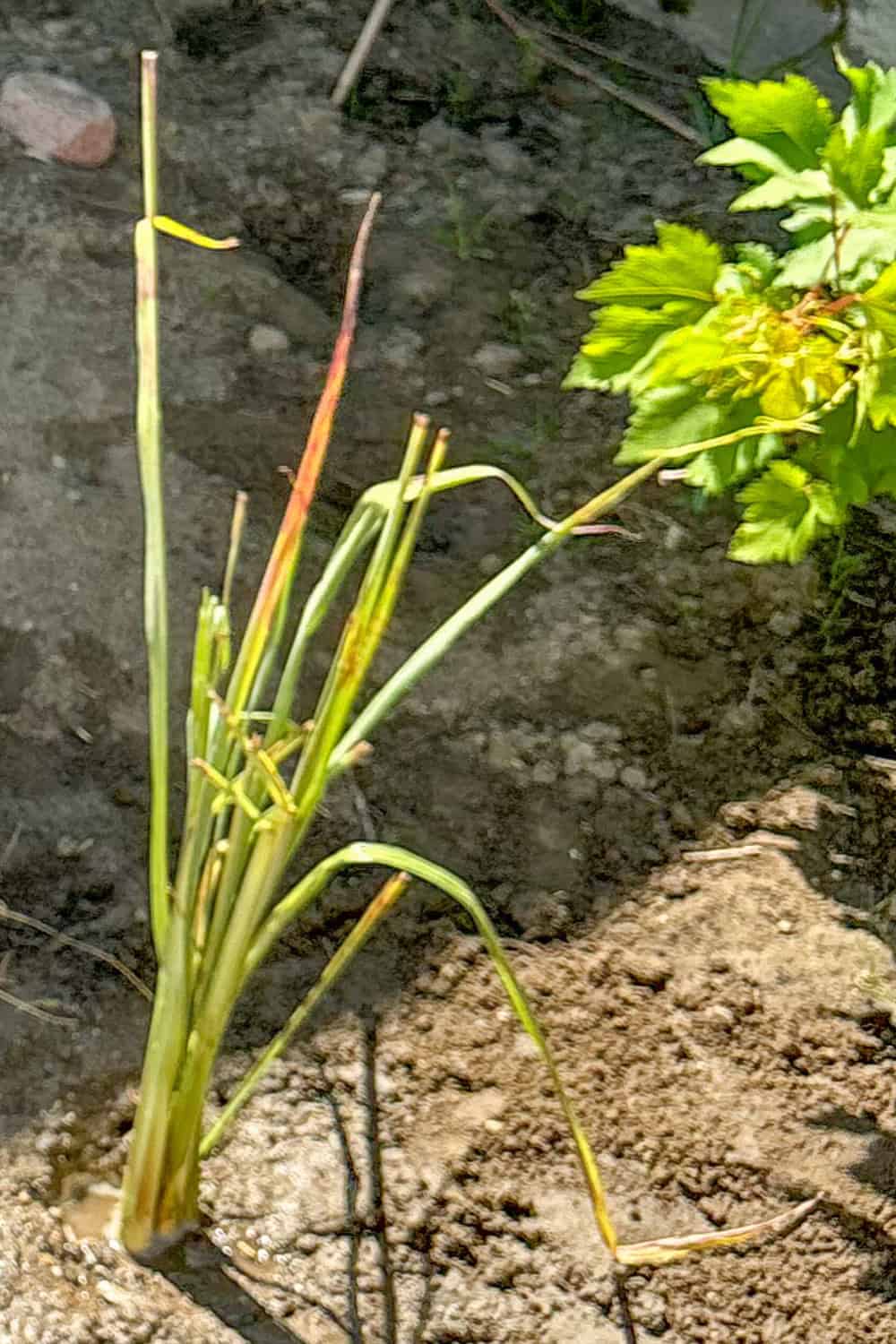
Where I live, in Oregon, lemongrass makes a fabulous container plant, and I am always on the lookout for great container plants that are easy to grow. Whether you grow lemongrass in the ground or in a container, there are many possibilities for good companion plants. If you are a fan of lemon-scented plants, lemongrass is a terrific option. It’s easy to divide and propagate, plus it lends a delicious lemon flavor to recipes. As a lover of anything related to lemons, how could I resist lemongrass? If you feel the allure as well, keep reading to learn how easy lemongrass is to grow.
Here is the same lemongrass plant just six months later, in October. You can see how much it has grown, and it seems to be thriving in the location we chose. The grape vines growing in the background seem to be thriving as well, so I’ll add grape vines to the list of good fruit companion plants for lemongrass. As long as all of the plants are having their watering needs met and have adequate space, these plants make good companions.
Lemongrass Companion Planting: What Makes a Good Companion Plant?
Why pay attention to companion plants? A good companion plant is one that offers various benefits to its neighboring plants, such as minimizing pest and disease issues, which helps enhance their growth, health, and overall productivity. Here are some key qualities that make a good companion plant that will help you plant strategically to make the most of your yard or garden space:
Pest Control: Companion plants may repel pests or attract beneficial insects that prey on pests, helping to reduce pest damage without the need for chemical pesticides.
Pollinator Attraction: Plants that attract pollinators such as bees, butterflies, and hummingbirds can improve pollination and fruit set in neighboring plants, leading to higher yields.
Soil Improvement: Some companion plants have deep roots that help break up compacted soil, while others fix nitrogen or add organic matter to the soil, improving soil fertility and structure for neighboring plants.
Complementary Growth Habits: Companion plants with different growth habits, such as tall plants providing shade for shorter ones or ground covers suppressing weeds, can maximize space and resources in the garden.
Disease Resistance: Certain companion plants may emit chemicals or compounds that inhibit the growth of pathogens or pests, reducing the risk of disease in neighboring plants.
Seasonal Considerations: Companion plants that thrive during different seasons can provide continuous benefits throughout the year, such as early bloomers attracting pollinators or cover crops protecting soil during the off-season.
Aesthetic Value: Companion plants with attractive foliage, flowers, or fruits can enhance the visual appeal of the garden while providing practical benefits to neighboring plants.
Lemongrass Hardiness Zone
Lemongrass is typically a hardy perennial in USDA hardiness zones 10-11. According to the USDA Plant Hardiness Zone Map, that is mainly southern California, parts of Arizona, parts of Texas, southern Florida, and Hawaii. In these zones, the climate is warm enough to support year-round growth. In cooler zones, as in Oregon’s zone 8, lemongrass can be grown as an annual or brought indoors during the colder months to protect it from frost.
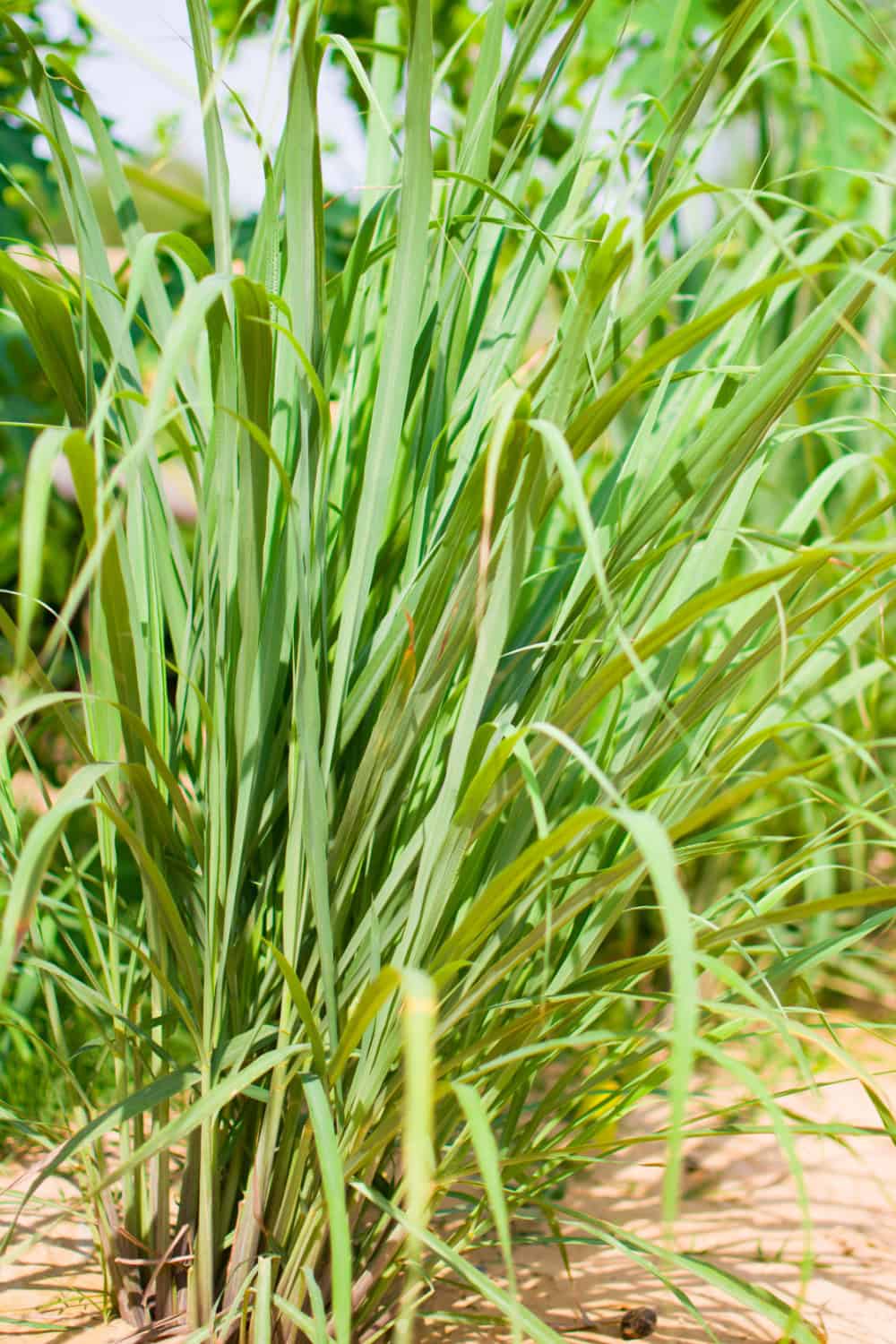
Uses for Lemongrass
Why grow lemongrass? Here are several ways to use lemongrass in cooking:
Infusions: Lemongrass makes a flavorful tea or infusion. Bruise or crush fresh lemongrass stalks and steep them in hot water for a few minutes. You can add honey or sweetener to taste.
Soups and Broths: Lemongrass is a key ingredient in many Asian soups and broths, such as Tom Yum and Tom Kha Gai. Add sliced or crushed lemongrass stalks to simmering broth to infuse their citrusy flavor.
Curries and Stir-fries: Finely chop or slice lemongrass and add it to curries, stir-fries, and marinades for poultry, seafood, or tofu. It pairs well with coconut milk and spicy flavors.
Salad Dressings: Use minced lemongrass in homemade salad dressings or vinaigrettes to add a refreshing citrus note.
Grilling: Use lemongrass stalks as skewers for grilling meat or vegetables. The oils in the lemongrass will impart a subtle flavor to the food.
Desserts: Infuse desserts like custards, sorbets, or ice creams with lemongrass for a unique citrus twist. You can steep lemongrass in milk or cream before adding it to your dessert recipe.
Herbal Butter or Oil: Blend finely chopped lemongrass into softened butter or oil. Use this infused butter/oil to season grilled or roasted dishes, vegetables, or bread.
Beverages: Add a few bruised lemongrass stalks to lemonades or other beverages for a refreshing twist. It pairs well with citrus flavors and herbs like mint.
Technique for Using Lemongrass in Recipes
When using lemongrass, it’s often best to bruise or crush the stalks slightly to release their oils and flavor before adding them to dishes. Remove the lemongrass before serving, as the fibrous stalks are tough to chew. Enjoy experimenting with lemongrass to discover how its bright, citrusy flavor can enhance your culinary creations!
Lemongrass Companion Plants: Flowers
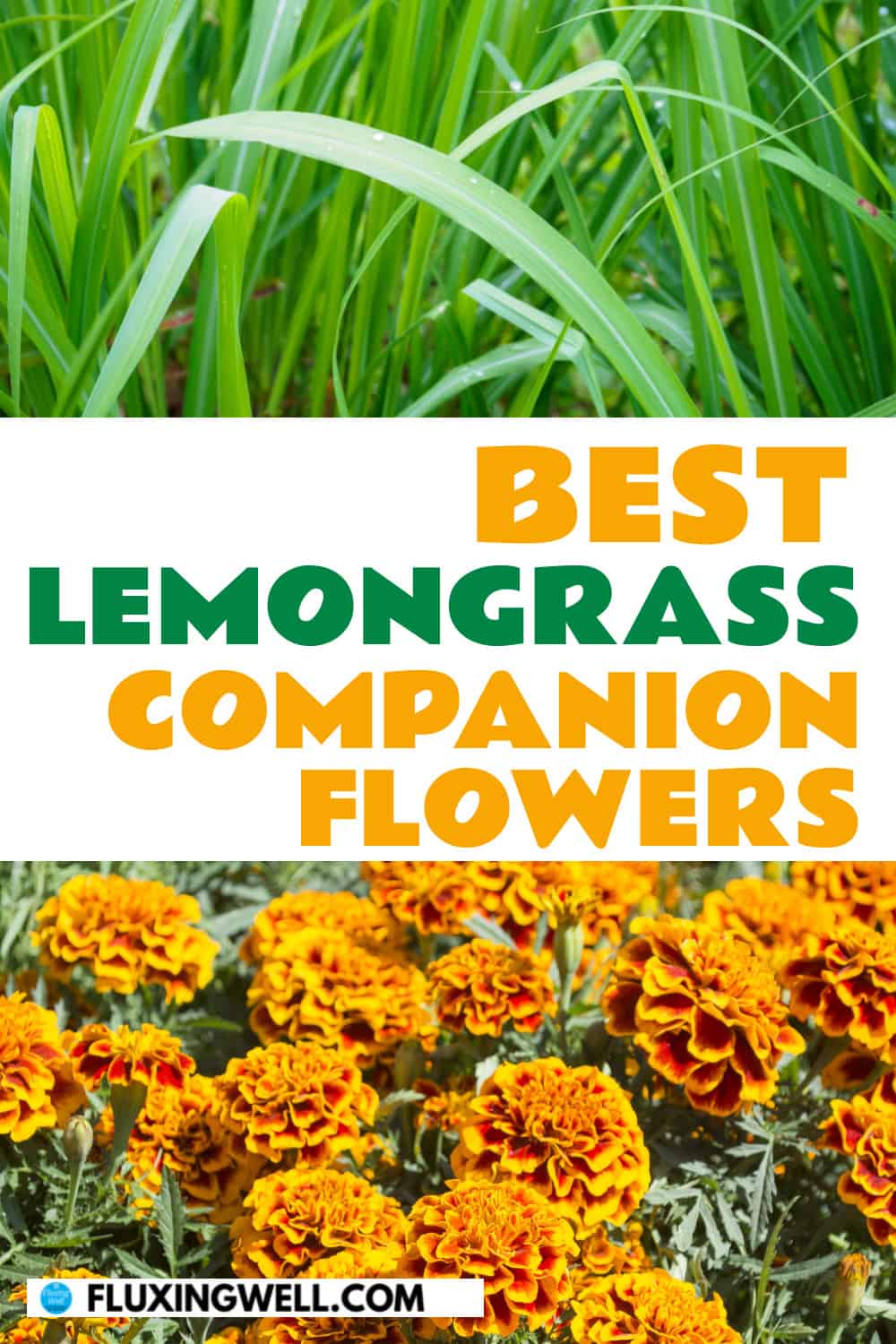
Lemongrass is a versatile herb that can benefit from companion planting. Here are some of the best companion flowers for lemongrass:
Calendula: Also known as pot marigold, calendula can help repel insects and attract beneficial pollinators.
Chamomile: This flower can help improve the flavor and growth of lemongrass and attracts beneficial insects.
Echinacea (coneflowers)**: These flowers attract beneficial insects like bees and butterflies, which can help with pollination.
Grape hyacinths: These little bulbs are wonderful additions to place around lemongrass in a container. They can be overwintered indoors, and then sprout again in the spring. The purple blossoms provide a pleasing color contrast to the lime-green foliage of the lemongrass.
Lavender: The strong fragrance of lavender can deter pests, and it pairs well with lemongrass in terms of care requirements.
Marigolds: These flowers deter many garden pests, including nematodes and aphids.
Nasturtiums: They act as a trap crop, attracting aphids away from lemongrass and other plants.
Lemongrass Companion Plants: Fruit

Lemongrass can be a beneficial companion plant for various fruiting plants due to its ability to repel pests and attract beneficial insects. Some good companion fruits for lemongrass include:
Blueberries: Both plants thrive in similar soil conditions, and lemongrass can help with pest management around blueberries.
Grapes: Lemongrass repels pests like aphids, which can benefit grape vines. Make sure you have adequate space and water for each plant to thrive.
Citrus Trees: Lemongrass can help deter pests and also provide some ground cover, which can benefit the shallow roots of citrus trees.
Strawberries: Lemongrass can help deter pests that commonly affect strawberries.
Lemongrass Companion Plants: Herbs
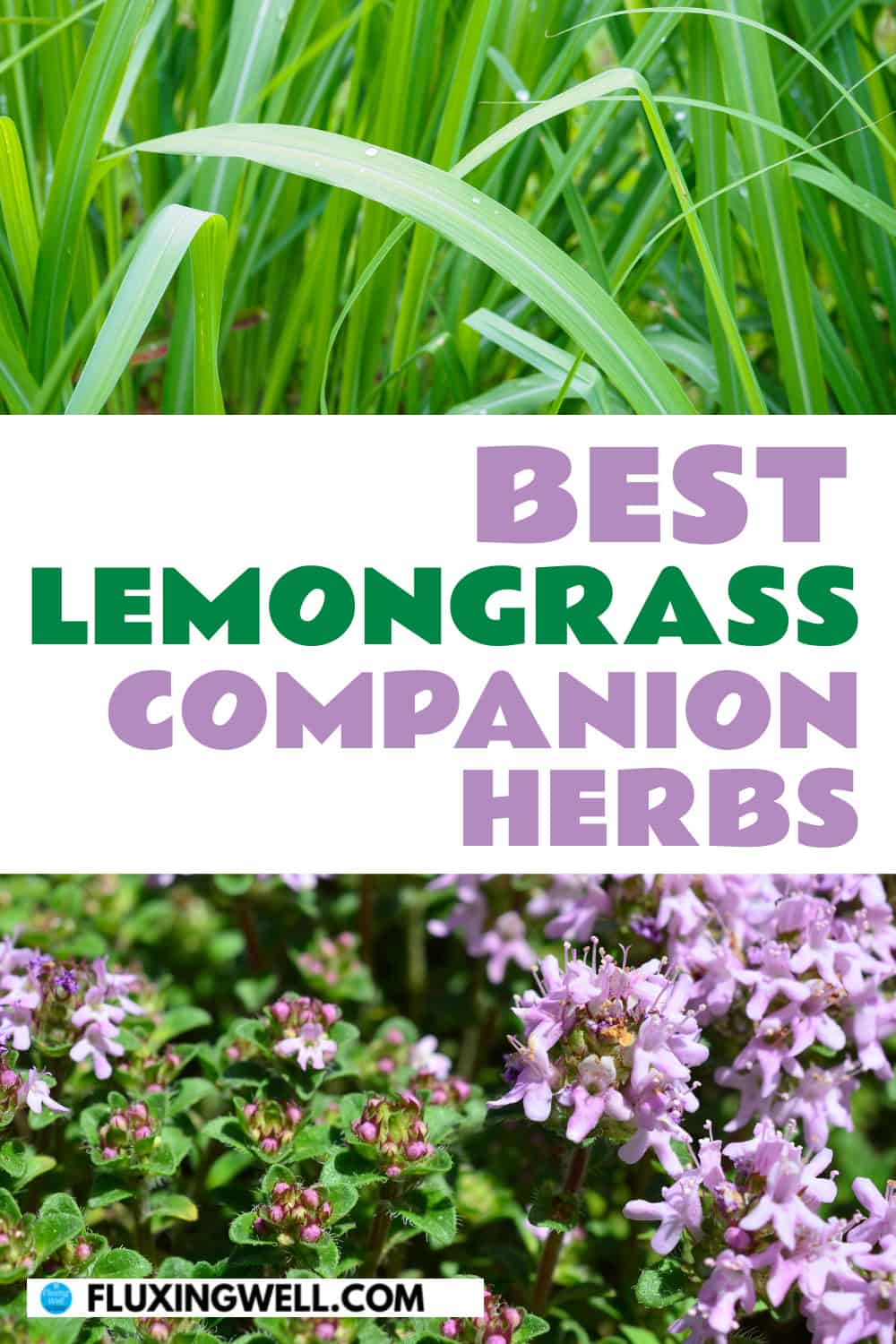
Lemongrass pairs well with various herbs in the garden, enhancing growth and deterring pests. Some excellent companion herbs for lemongrass include:
Basil: Both lemongrass and basil thrive in similar growing conditions, and basil can help repel mosquitoes and other pests.
Cilantro: Cilantro can attract beneficial insects and provide ground cover.
Oregano: Oregano can repel pests and also acts as a ground cover, protecting the soil.
Thyme: Thyme is a low-growing herb that can act as a living mulch, helping to retain soil moisture.
Lemongrass Companion Plants: Vegetables
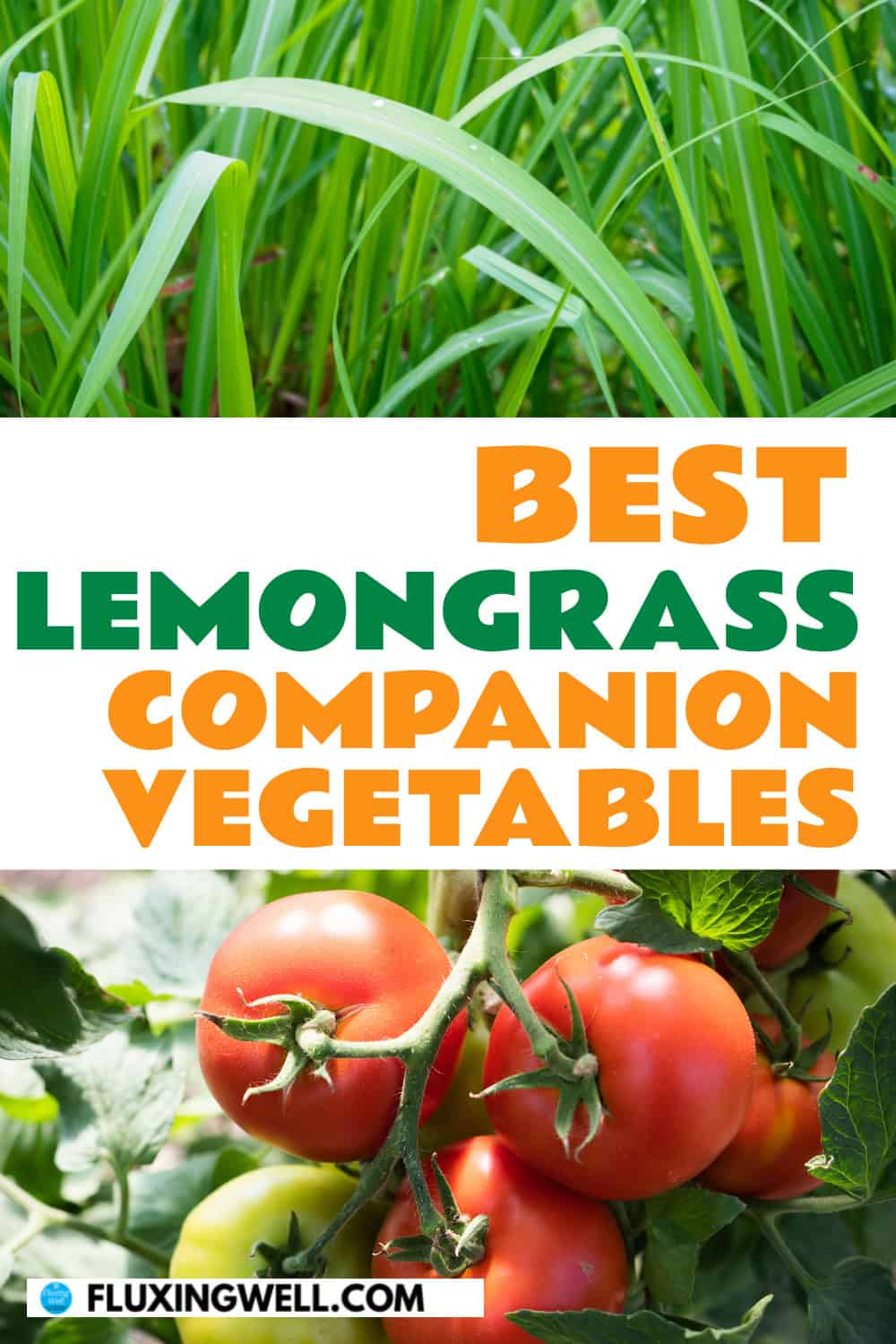
Lemongrass can be a beneficial companion plant for various vegetables, helping to repel pests and improve the overall health of the garden. Here are some good companion vegetables for lemongrass:
Carrots: Lemongrass can help repel pests like carrot flies and improve the growing environment for carrots.
Cucumbers: Lemongrass can deter pests that target cucumber plants, such as aphids and spider mites.
Eggplant: Lemongrass can help keep pests like spider mites and aphids away from eggplant.
Lettuce: Lemongrass can help protect lettuce from pests like aphids and slugs, while the lettuce can provide ground cover to retain soil moisture.
Peppers: Both bell peppers and hot peppers benefit from the pest-repellent properties of lemongrass.
Tomatoes: Lemongrass can help deter pests such as aphids and whiteflies that commonly affect tomato plants.
What Not to Plant with Lemongrass
While lemongrass is generally a good companion plant, there are a few plants that might not thrive well when planted alongside it due to differing growing requirements or potential competition. Avoid planting lemongrass with:
Cabbage Family (Brassicas): Plants like cabbage, broccoli, and cauliflower have different nutrient and water needs and may not do well with lemongrass.
Fennel: Fennel tends to inhibit the growth of many other plants, including lemongrass, due to its allelopathic properties.
Garlic and Onions: These alliums may compete with lemongrass for nutrients and space, and their strong scents could interfere with the beneficial properties of lemongrass.
Mint: Mint can be very invasive and might compete with lemongrass for space and nutrients. If you want to grow both, consider planting mint in a container.
Sage: Sage prefers drier conditions and may not thrive with the higher moisture levels that lemongrass requires.
Lemongrass Companion Planting Chart
Lemongrass Companion Plants
Lemongrass Companion Plants: Flowers
Lemongrass Companion Plants: Fruit
Calendula
Blueberries
Chamomile
Citrus trees
Echinacea
Strawberries
Grape hyacinths
Grapes
Lavender
Lemongrass Companion Plants: Vegetables
Marigolds
Carrots
Nasturtiums
Cucumbers
Eggplant
Lemongrass Companion Plants: Herbs
Lettuce
Basil
Peppers
Cilantro
Tomatoes
Oregano
Thyme
Worst Lemongrass Companion Plants
Broccoli
Cabbage
Cauliflower
Garlic
Onions
Mint
Sage
Lemongrass Planting and Growing Tips
When to Plant Lemongrass
Lemongrass is best planted in the spring after the danger of frost has passed and the soil has warmed up. Plant lemongrass in late spring or early summer, once the temperature consistently stays above 50°F (10°C) at night.
Where to Plant Lemongrass
Choose a sunny spot with well-draining soil. Lemongrass thrives in full sun and requires at least 6-8 hours of sunlight per day. Prepare the soil by mixing in compost or well-rotted manure to provide nutrients and improve drainage. If you have lemongrass stalks, make sure they have a bit of root attached. Plant them about 1-2 inches deep and 2-3 feet apart to allow for growth.
Watering Lemongrass
Keep the soil consistently moist, especially during the initial establishment period. Once established, lemongrass is somewhat drought-tolerant but prefers regular watering.
How to Divide Lemongrass
Dividing lemongrass every few years can help maintain healthy growth and prevent overcrowding. Dividing lemongrass is a great way to propagate the plant and manage its size. Here are the steps to divide lemongrass:
Timing: The best time to divide lemongrass is in the spring or early summer when the plant is actively growing.
Preparation: Water the plant thoroughly a day before you plan to divide it. This will help reduce stress on the plant and make it easier to dig up.
Digging Up: Carefully dig around the base of the lemongrass clump with a spade or garden fork. Try to lift the entire clump out of the ground, taking care not to damage the roots.
Separating Clumps: Shake off or rinse away excess soil from the roots to clearly see the individual stalks. Use a sharp knife or garden shears to cut the clump into smaller sections, ensuring that each section has at least a few stalks and a good portion of the root system.
Replanting: Plant each divided section into its new location or container. Plant them at the same depth as they were originally growing, and space them about 2-3 feet apart to allow for growth.
Watering: Water the newly planted divisions well to help them establish. Keep the soil consistently moist until the plants are well-established.
Mulching: Applying a layer of mulch around the base of the plants can help retain moisture and suppress weeds.
How to Grow Lemongrass Indoors
Where I live, as previously noted, lemongrass does not overwinter well. Many gardeners either grow lemongrass in a container to move inside for the winter, or dig up the lemongrass in the fall to bring inside. Here’s how to successfully grow lemongrass inside:
Container: Choose a large pot with good drainage holes. Lemongrass has a robust root system, so a pot that’s at least 12 inches in diameter and depth is ideal.
Soil: Use well-draining potting soil mixed with some compost to provide nutrients. Ensure the soil retains moisture but doesn’t become waterlogged.
Light: Place the pot in a location that receives plenty of sunlight. Lemongrass needs at least 6-8 hours of direct sunlight per day. A south-facing window is usually the best spot. If natural light is insufficient, consider using a grow light.
Watering: Keep the soil consistently moist but not soggy. Water the plant when the top inch of soil feels dry to the touch. Ensure the pot has good drainage to prevent root rot.
Humidity: Lemongrass prefers humid conditions. To increase humidity, you can mist the plant regularly or place a humidity tray (a tray filled with water and pebbles) nearby.
Temperature: Maintain a warm indoor temperature, ideally between 65°F and 85°F (18°C to 29°C). Lemongrass does not tolerate cold temperatures or drafts.
Fertilization: Feed the plant with a balanced liquid fertilizer every 4-6 weeks during the growing season (spring and summer). Reduce feeding during the fall and winter when the plant’s growth slows down.
Harvesting: You can start harvesting lemongrass once the stalks are at least half an inch thick. Cut the stalks near the base, and new shoots will continue to grow from the root clump.
Need More Planting Ideas?
Check out the tips for the best companion plants for eggplant to learn what to grow with those beauties. If you like the idea of companion planting, you might be interested in reading about the best companion plants for pumpkins, sunflowers, garlic, asparagus, rosemary, radishes, dill, beetroot (beets), thyme, parsley, lupine, borage, stevia, kale, hosta, arugula, or the best companion plants for lavender. Get tips for growing stunning dahlias or vintage roses. Are you a beginning gardener? Try planting some foolproof, easy-care perennials, or learning about the best companion plants for columbine. There are so many exciting plants to grow!
Keep Track of Your Garden with a Journal Logbook
Now that you have learned about some compatible companion plants, keep track of your planting ideas, goals, and plans with a printable, editable free garden journal logbook. Choose the pages you want to use and customize them as you wish to record monthly, weekly, and daily garden tasks, lists, weather, and planting arrangements. There are also grid pages for easily designing the layout of your vegetable garden, flower garden, or landscape. Print it out and put it into a notebook you can take with you to the garden (that’s what I do). It’s nice to have all of your garden information in one place.
Free Online Garden Planner Layout Template
Now that you know which are the best companion plants for lemongrass, you might need a way to plan your garden layout. Whether you are planting vegetables, flowers, or herbs near your lupine plants, this online garden planner can help you visualize your design and bring it to life.
Arrange and rearrange the plants over and over, then print the layout when you are satisfied. With garden tasks that need your attention, this is one way to save time.
Have a wonderful week, and may all of your lemongrass-growing endeavors meet with success!
Lisa Mitchell is a wife, mom, and school librarian who likes to grow fruit, herbs, vegetables, and flowers on her family’s small Pacific Northwest farm. To learn more about what this website has to offer gardeners, click on over to the Garden page.
Want more great garden, food, or travel ideas? Follow FluxingWell on Pinterest, Flipboard, Facebook, Instagram, and X for the latest posts, tips, and inspiration.

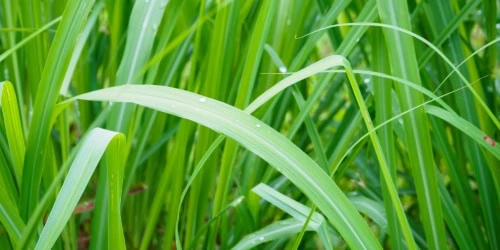
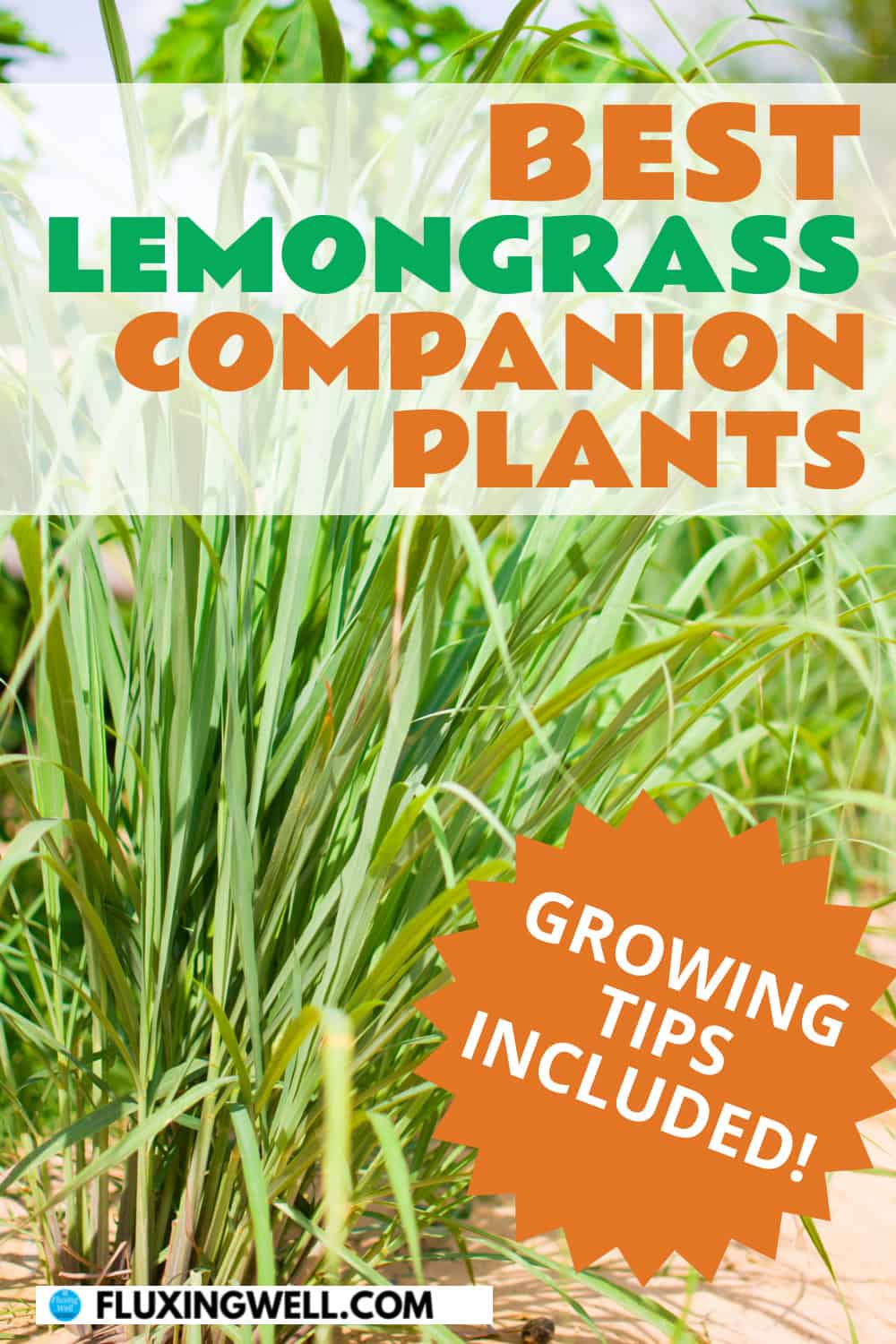
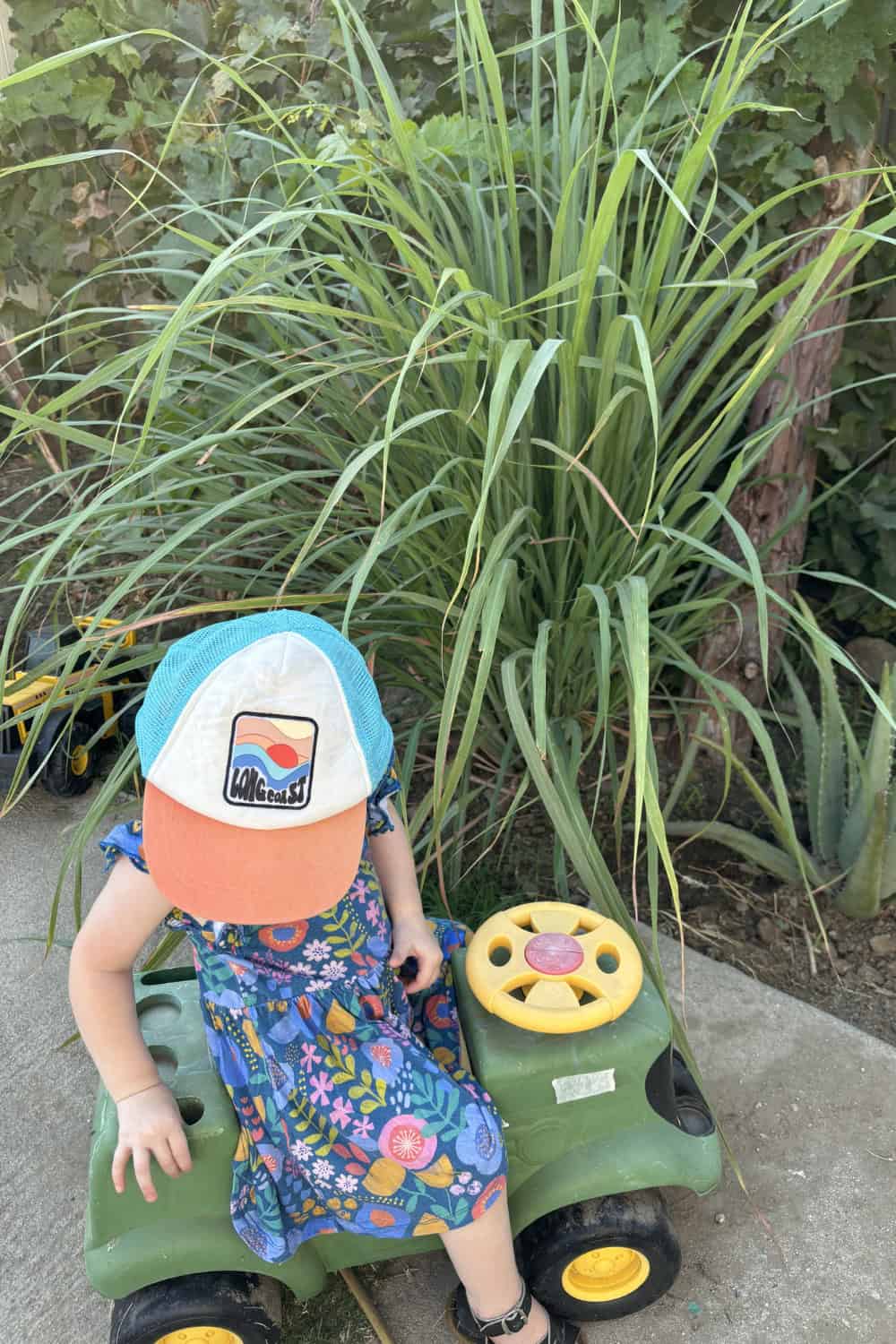



I always appreciate your gardening tips, Lisa! Thanks for sharing this helpful information about the best lemongrass companion plants and the ones to avoid.
Sure thing! I am glad you found the lemongrass companion plants information helpful.
Thanks for the great information about lemongrass companion plants! I appreciate the indoor growing tips.
You are very welcome! I am always happy to share what I learn.
Thank you for sharing these best lemongrass companion plants as well as growing tips. I love that it can help enhance my garden’s health.
You are welcome! I hope you get to plant some lemongrass.
This is incredibly helpful! I had no idea that certain plants pair so well with lemongrass while others should be avoided. Your insights will definitely help my garden thrive.
Great! I hope you are able to add lemongrass to your garden.